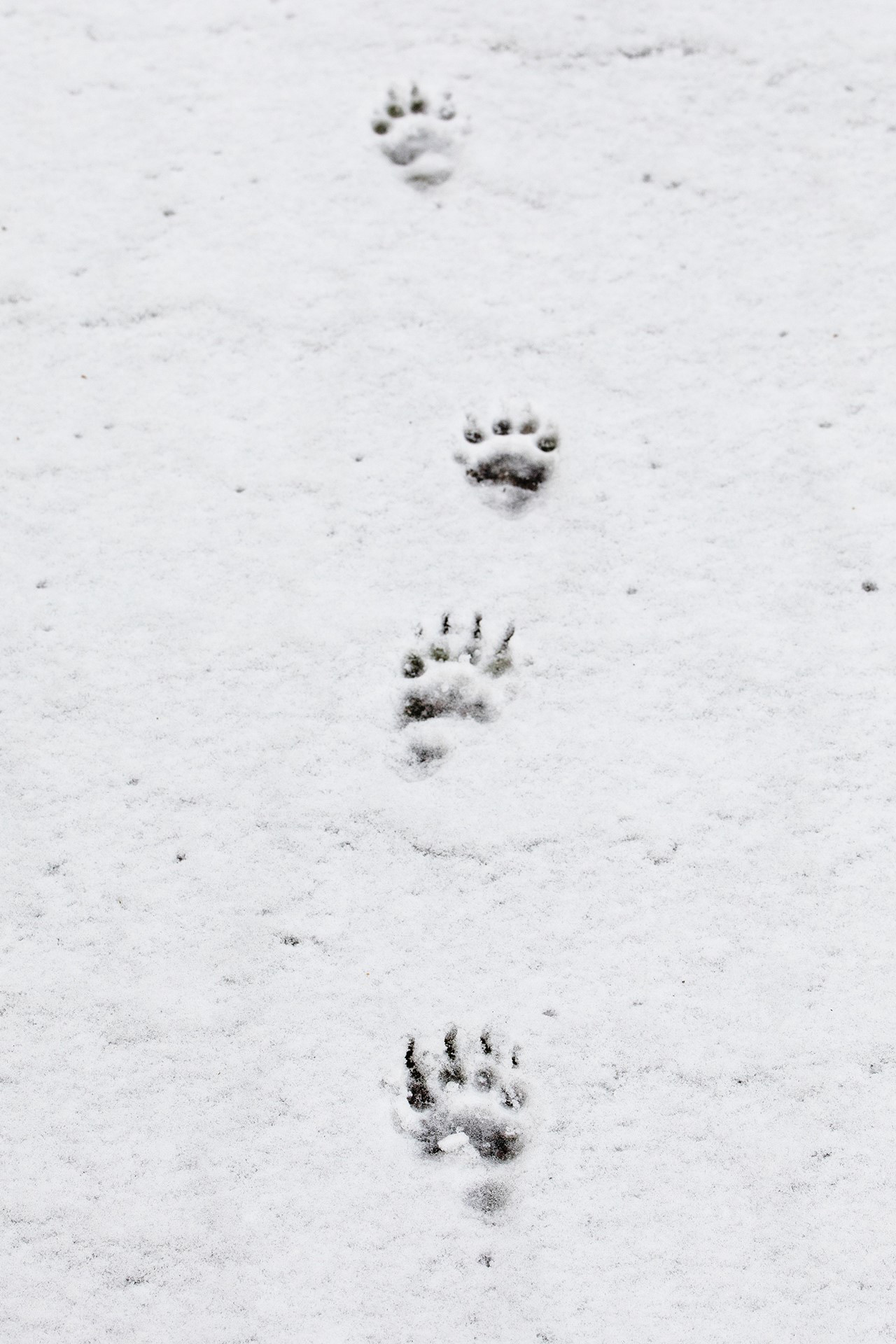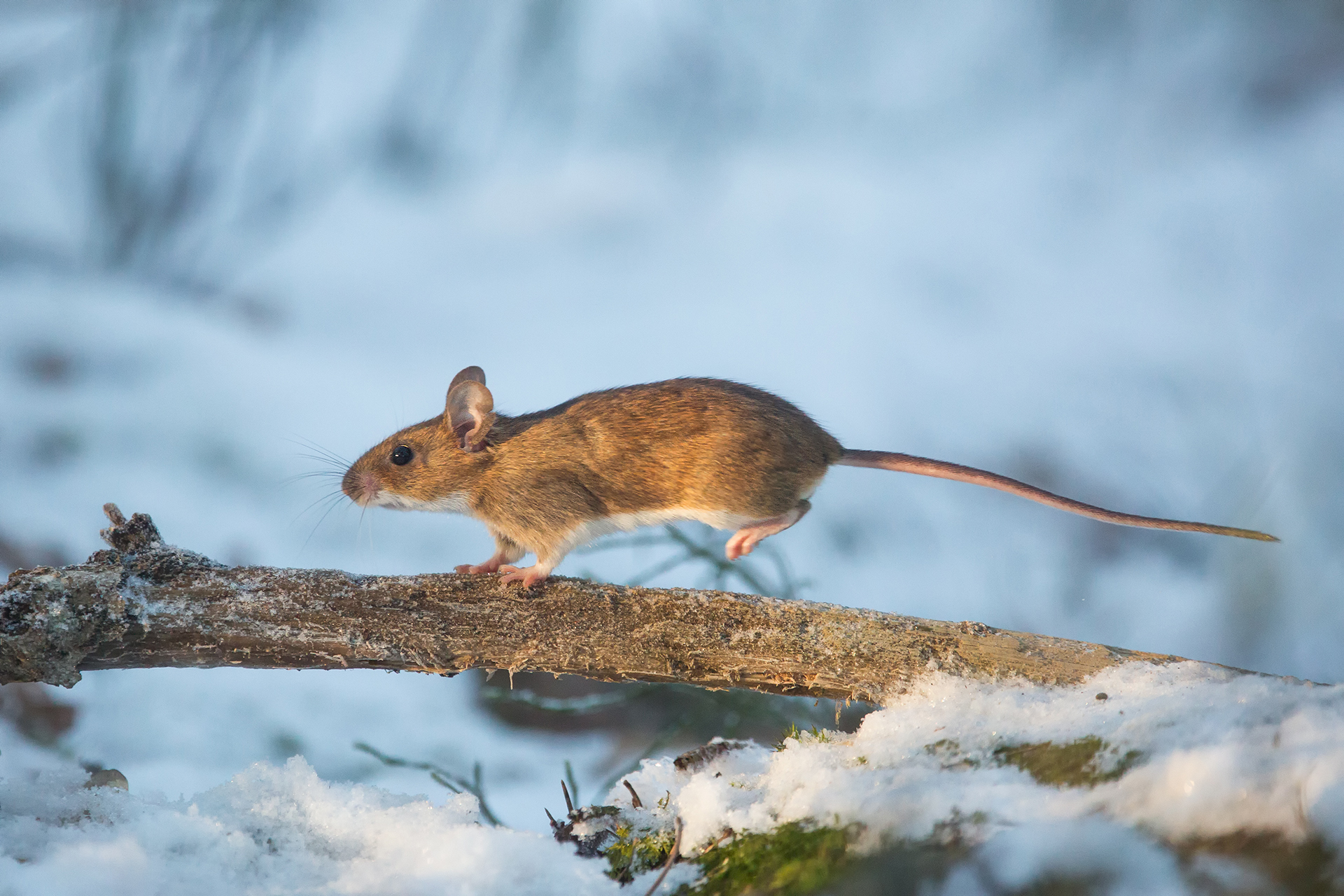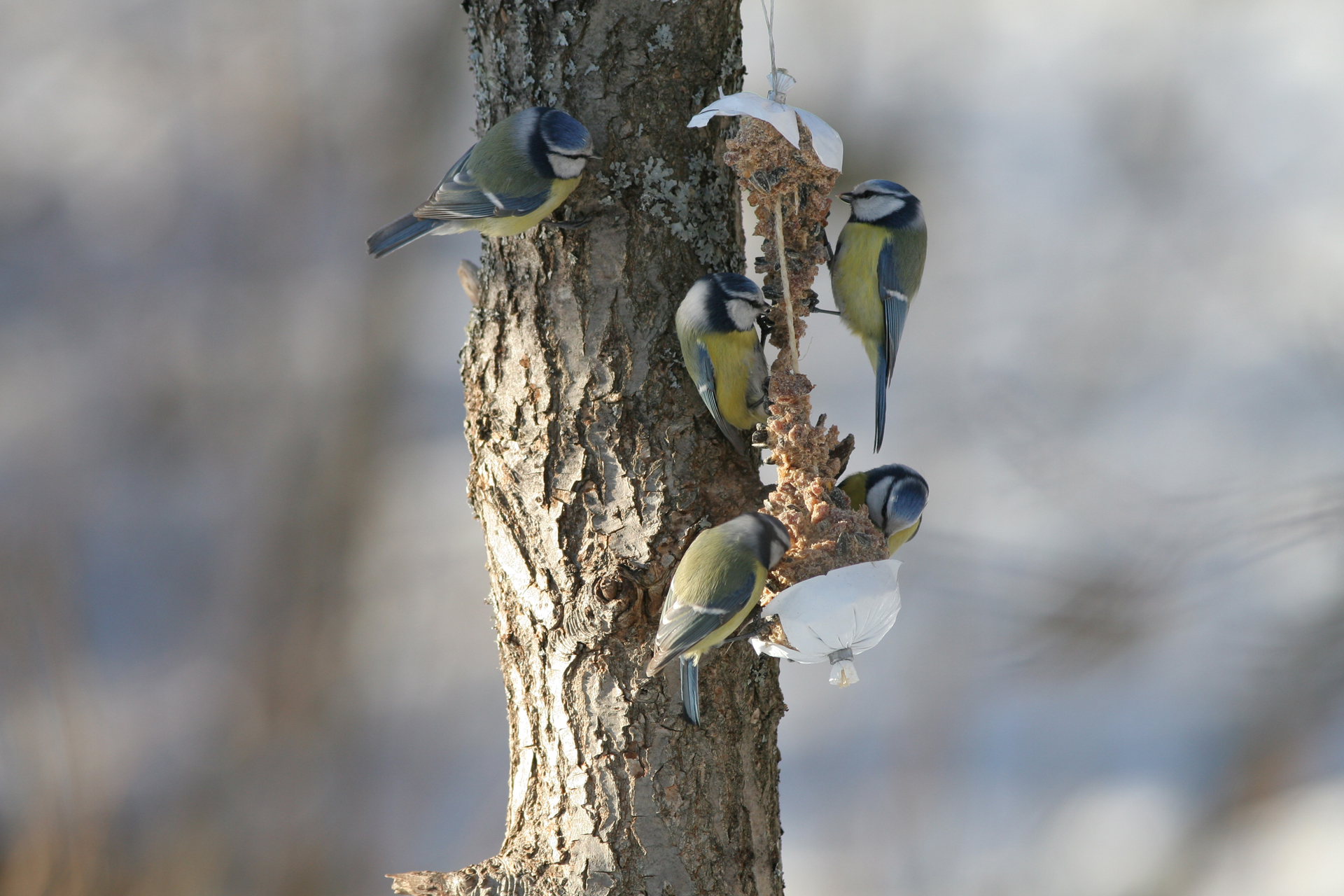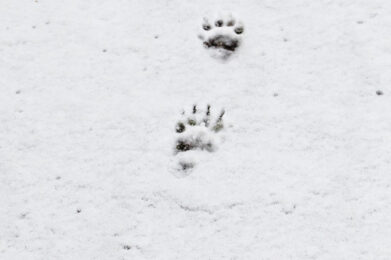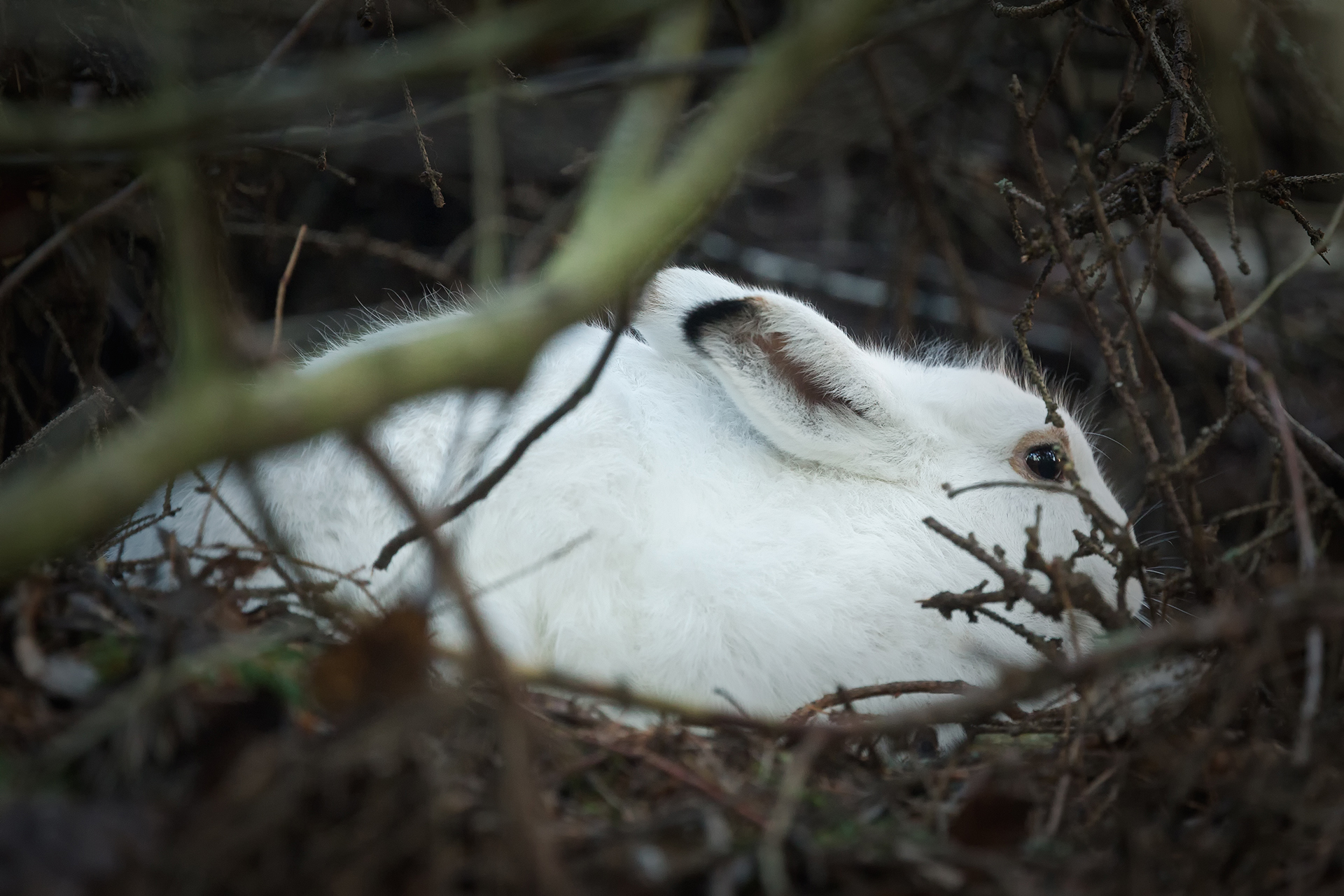The surface of the snow tells a thousand stories
The tracks criss-crossing on the surface of the snow tell fascinating stories of winter animals and their lives. In the fields, roe deer leave distinct marks as they dig under the snow for grass, and at the edge of the forest the delicate tracks of a small rodent may terminate in an impression left behind by the wings of a tawny owl. The blue hare also leaves distinct tracks in the snow as it leaps erratically to escape its predators, such as the red fox, which leaves a straight line of paw prints in its wake.
The tracks in the snow can be used not only to identify the animal in question, but to determine what it was doing or where it was going.
In addition to paw prints, hoof marks and bird tracks, animals also leave behind plenty of other signs of life. Moles excavate tunnels in the snow, foxes dig holes to get to their prey, blue hares gnaw on the bark of aspen trees and squirrels drop the remains of the cones that they eat on to the snow. Crossbills, parrot crossbills and great spotted woodpeckers also leave behind the remains of cones that they each eat in their own distinct way.
Identifying winter tracks is both fun and fascinating! The first priority is to identify the species, after which you can focus on following the tracks and droppings to determine what that particular animal was doing. Help in identifying tracks is available online and from special tracking guidebooks. If you cannot identify tracks on-site, you can also snap a picture of both the tracks and some individual paw or hoof marks to identify later. To make identification easier, you should also include a familiar object in the picture to provide a sense of scale.
